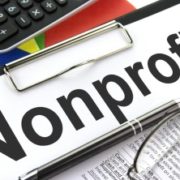Beware of Scammers Preying on Your Generous Nature
Beware of Scammers Preying on Your Generous Nature
The IRS and numerous other nonprofit agencies are warning Americans to be weary of scammers trying to take advantage of their generosity after major catastrophes like Hurricanes Florence and Michael.
“We applaud our client’s desires to want to help in times of crisis,” says Steven Feinberg, CPA and owner of Appletree Business Services. “What we want to avoid is unnecessary stress and even criminal charges if that client makes a donation to a criminal organization instead of a truly reputable and worthy cause.”
Fraudulent schemes normally start with unsolicited contact by telephone, social media, e-mail or in person using a variety of methods.
- Pose as representatives acting on behalf of charities or private institutions to solicit cash donations.
- Bogus websites using names, branding and colors similar to legitimate charities to trick donors to send money or provide personal information such as bank account routing numbers, credit cards or other data.
- Claim to be members of the IRS working to help victims to file casualty loss claims and get tax refunds. The IRS will never solicit taxpayers for this purpose.
What can you do?
If you are a disaster victim and need information on tax relief or other disaster-related tax concerns, call the IRS Special Services Help Line at 866-562-5227. Details on accessing additional information can also be found on the disaster relief page on IRS.gov.
Donate wisely.
If you wish to donate, make sure they are real charities. You can verify the prospective charity, by visiting the IRS website at IRS.gov and using the Tax Exempt Organization Search feature. Here you will be able to find or verify qualified charities.
How much goes to the charity?
Before you click ‘donate’ take a minute to research the charity online. You can do this by searching on the charity’s name plus key phrases like, “review”, “compliant”, “rating” or “scam”. The consumer section of the Federal Trade Commission’s website also recommends the following organizations to view reports and ratings for nonprofits:
- BBC Wise Giving Alliance
- Charity Navigator
- CharityWatch
- GuideStar
Know the Scammers M.O.
Scammers and criminals always have a pattern to their schemes. Look out for some of the following tell-tale signs and just say, No!
- Don’t let anyone rush you into making a contribution. No matter what they say, no one will die if you don’t donate $20 right this minute!
- Thank you. Don’t be tricked by a scammer calling to thank you for a donation you know you’ve never made. Scammers will start by thanking you and then subtly ‘ask’ for additional donations to support the cause you already ‘love’.
- Listen carefully. Scammers will use charity names that sound oddly similar to real organizations but are not. Ask for specifics, federal tax identification numbers (and verify them) and specifics on how your donation will be used.
- Never donate gift cards or money transfers. No reputable charity will ask you to go out and purchase gift cards on their behalf or wire money via Western Union or other agency. Always pay by check or credit card so the amounts can be traced and rescinded, if necessary.
- Sweepstakes. Callers who promise to guarantee sweepstakes winnings in exchange for a donation are SCAMMERS. It is illegal to offer such incentives in order to solicit a donation.
You’ve been scammed, now what?
If you have made a donation to what you now believe is a scam, take action. You can report scams to your local police, the FTC.gov/complaint, and your state charity regulator. Write down any information you can remember about what the organization asked for, their phone number or website address, and details about your conversation.
PASBA member accountants bring the collective resources of a nationwide network of Certified Public Accountants, Public Accountants, Enrolled Agents and other practitioners available to answer your tax and financial questions and streamline your business accounting, bookkeeping, and payroll operations.
To find a trusted accountant in your area, visit www.SmallBizAccountants.com.
Please be advised that, based on current IRS rules and standards, any advice contained herein is not intended to be used, nor can it be used, for the avoidance of any tax penalty that the IRS may assess related to this matter. Any information contained in this article, whether viewed or subsequently printed, cannot be relied upon as qualified tax and accounting advice. Any information contained in this article does not fall under the guidelines of IRS Circular 230.





